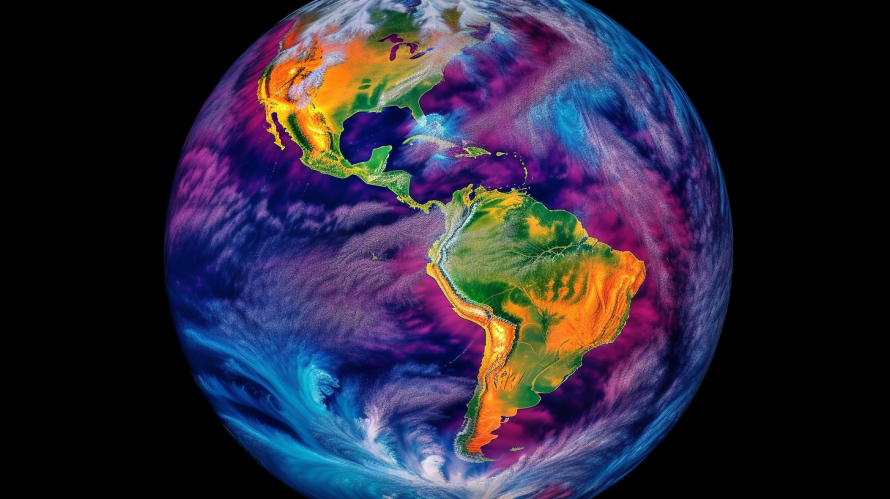
South Africa, like many regions around the world, is experiencing the impacts of climate change, which poses significant challenges to its water resources and agricultural sectors. Droughts have become more frequent and severe in the country, affecting both rural and urban areas. This article explores what is the relationship between climate change and the regularity of droughts in South Africa, examining the underlying factors contributing to this phenomenon and its implications for water availability, agriculture, and society at large.
Climate Change and Increased Temperature
Climate change is characterized by rising global temperatures, and South Africa is not immune to this trend. Higher temperatures exacerbate evaporation rates, leading to increased water loss from soils, reservoirs, and vegetation. This intensified evapotranspiration contributes to the drying of the environment and amplifies the severity and frequency of droughts.
Changes in Rainfall Patterns
South Africa’s rainfall patterns are influenced by large-scale climate systems such as El Niño-Southern Oscillation (ENSO) and the Indian Ocean Dipole (IOD). Climate change is altering these systems, leading to shifts in rainfall distribution. While some regions may experience increased rainfall intensity, others may suffer from decreased rainfall or more prolonged dry spells. These changes in rainfall patterns can result in extended periods of water scarcity and increased vulnerability to droughts in certain areas.
Variability of Rainfall
In addition to changes in rainfall patterns, climate change is also contributing to increased variability in precipitation. South Africa has always experienced natural climate variability, but global warming amplifies these fluctuations. This increased variability makes it difficult to predict when and where rainfall will occur, making it challenging for farmers and water resource managers to plan effectively. The unpredictability of rainfall exacerbates the vulnerability to droughts, particularly in regions dependent on rainfed agriculture.
Impact on Water Resources
Droughts have severe consequences for water resources in South Africa. Decreased rainfall and increased evaporation rates reduce water availability, leading to declining dam levels, groundwater depletion, and drying up of rivers and streams. As a result, water scarcity becomes a significant concern, affecting both rural and urban populations. In times of drought, municipalities may implement water restrictions, impacting households, agriculture, and industries.
Agriculture and Food Security
Agriculture plays a vital role in South Africa’s economy and food security. Droughts have a devastating impact on agricultural production, leading to reduced crop yields, livestock losses, and decreased farm income. The vulnerability of the agricultural sector to droughts has serious implications for food security, as it affects the availability and affordability of food. Small-scale farmers are particularly vulnerable, as they often lack the resources to implement adaptive measures and cope with the impacts of drought.
Ecosystems and Biodiversity
Droughts also have significant ecological consequences, affecting South Africa’s diverse ecosystems and biodiversity. Prolonged dry spells can lead to habitat degradation, forest fires, and increased pressure on wildlife. Indigenous plant species, adapted to specific rainfall patterns, may struggle to survive, impacting ecosystem resilience and biodiversity conservation efforts. The disruption of natural ecosystems further compounds the socio-economic impacts of droughts.
Socio-economic Impacts
Droughts have far-reaching socio-economic impacts, affecting livelihoods, employment, and socio-political stability. In rural areas, where agriculture is a primary source of income, droughts can lead to increased poverty, migration, and social unrest. In urban areas, water shortages can disrupt daily activities, including sanitation, industry, and commerce. The economic costs associated with droughts, such as increased food prices, water scarcity mitigation measures, and loss of productivity, strain national budgets and hinder development efforts.
Adaptation and Mitigation
To address the regularity of droughts in South Africa, a comprehensive approach is needed, combining adaptation and mitigation strategies. This includes enhancing water resource management through infrastructure investment and efficient water use, promoting climate-smart agricultural practices to reduce vulnerability, diversifying water sources through alternative options and water-saving technologies, restoring ecosystems to regulate water flow and replenish reserves, raising public awareness about sustainable practices, and fostering international cooperation for funding and knowledge sharing. These measures are crucial for building resilience, mitigating the impacts of droughts, and ensuring a sustainable future for South Africa amidst the challenges of climate change.
Conclusion
The regularity of droughts in South Africa is closely linked to the impacts of climate change, including increased temperatures, changes in rainfall patterns, and water scarcity. These droughts have significant implications for water resources, agriculture, ecosystems, and socio-economic well-being. However, through the implementation of adaptation and mitigation strategies, including sustainable water resource management, climate-smart agriculture, diversification of water sources, ecosystem restoration, public awareness, and international cooperation, South Africa can enhance its resilience to droughts and build a more sustainable future. It is crucial to prioritize these efforts to mitigate the adverse effects of climate change and ensure a secure and prosperous future for the country and its people.

